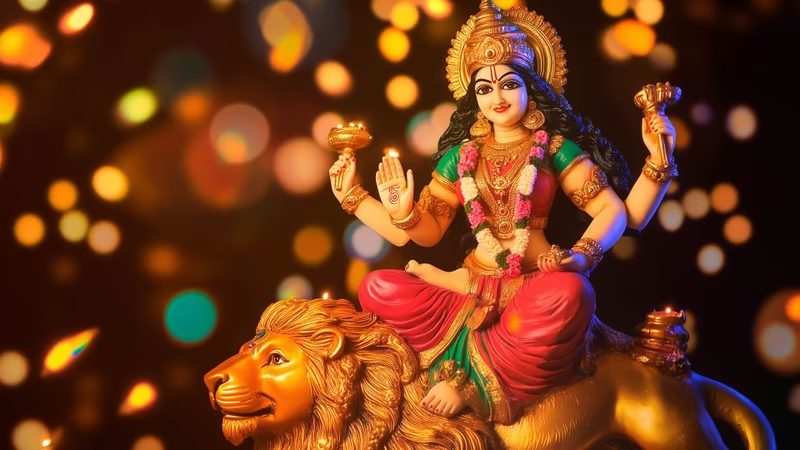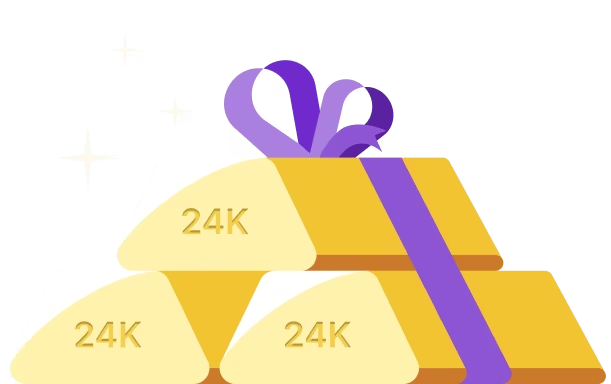Navratri 2025 is set to begin from September 22 and will conclude on October 1, marking Dussehra.
Navratri is known to usher in the festive season in India with people preparing dance routines for garba and picking out outfits for their Durga Puja looks. Check out these Exclusive Curated collection trending for Bollywood Inspired Navratri Jewelleries.
While it’s a great time for people to come together and celebrate the festive season, it is also necessary to know the historical significance behind the celebrations.
Take a closer look at the true meaning behind the 9-day-long festival and its importance in Hindu mythology.
Why is Navratri celebrated?
The word ‘Navratri’ has its roots in Sanskrit where ‘Nav’ means nine and ‘ratri’ means night. Most Indians observe fast during all nine days of Navratri and follow a different diet plan abstaining from alcohol, non-vegetarian items, onion, and garlic.
Many devotees worship nine avatars of Maa Durga on each day of Navratri to seek blessings from the goddess for success, wealth, prosperity, and good health.
People across the country dress up in new clothes, wear gold and silver jewellery, and participate in dance events to celebrate this auspicious festival.
It is also a custom in several religions to offer silver and gold coins to Maa Durga as a symbol of their devotion.
The Story Behind Navratri
Navratri is celebrated in honour of Maa Durga defeating and killing the demon named Mahishasura. Mahishasura was blessed with a gift of immortality by a powerful God named Lord Brahma.
Lord Brahma had blessed the demon with this gift with one condition. The condition was that he would only die at the hands of a woman.
Mahishasura believed no woman would ever be powerful enough to defeat him, hence, he accepted this condition.
Over the years, Mahishasura and his group of evil men became a powerful unit that started attacking people on Earth. Their powers were so strong that no Gods were able to defeat them.
Since Lord Brahma had blessed him with the gift of immortality, it was impossible to defeat him. Ultimately, to put an end to Mahishasura’s terror, Lord Brahma, Lord Vishnu, and Lord Shiva decided to create the mighty Goddess Durga who would defeat the evil demon.
Goddess Durga was created to destroy Mahishasura, and the three Lords also bestowed her with several weapons. Maa Durga fought the demon for 10 days, however, it was difficult to defeat the powerful demon as he kept shifting his form.
Ultimately, he took his final form as a buffalo and Goddess Durga was able to defeat him and put an end to his terror.
Navratri 2025 Dates
Navratri is one of the most important festivals for Hindus all over the world. Some people celebrate it with religious sentiments offering gold coins to Maa Durga idols.
On the other hand, others indulge in activities such as dancing, dressing up, and acting in plays depicting Maa Durga’s story.
The festival spans nine days and is concluded by celebrating Dussehra on the tenth day. Here’s a list of Navratri 2025 dates:
Day | Date | Goddess | Tithi |
1 | Sep 22, Monday | Maa Shailaputri | Pratipada |
2 | Sep 23, Tuesday | Maa Brahmacharini | Dwitiya |
3 | Sep 24, Wednesday | Maa Chandraghanta | Tritiya |
| 4 | Sep 25, Thursday | Maa Kushmanta | Chaturthi |
| 5 | Sep 26-27, Fri-Sat | Maa Skandamata | Maha Panchami |
6 | Sep 27, Saturday | Maa Katyayani | Maha Shashti |
7 | Sep 28, Sunday | Maa Kalaratri | Maha Saptami |
8 | Sep 29-30, Mon-Tue | Maa Mahagauri | Maha Ashtami |
9 | Sep 30-Oct 1, Tue-Wed | Maa Siddhidatri | Maha Navami |
| 10 | Oct 1-2, Wed-Thurs | Maa Durga | Vijaya Dashmi |
Nine Days of Navratri: Colors & Significance
Each day of Navratri celebrates nine avatars of Maa Durga and people also wear specific colours that represent each goddess.
Day 1: The first day of Navratri celebrates Maa Shailapturi who is the goddess of courage. It is associated with the color yellow which symbolizes joy and happiness.
Day 2: The second day of Navratri celebrated Maa Skandamata, the mother of Lord Skanda. This day is associated with the color green symbolising growth and fertility.
Day 3: The third day of Navratri celebrates Maa Chandraghanta who is the goddess of peace. People adorn themselves with grey-coloured clothing which symbolizes balance and stability.
Day 4: The fourth day of Navratri celebrates Maa Kushmanta who is the goddess of prosperity. It is associated with the orange colour reflecting her fierceness and strong energy.
Day 5: The fifth day of Navratri celebrates Maa Brahmacharini who is the goddess of purity. It is associated with the white colour which represents serenity and purity.
Day 6: The sixth day of Navratri celebrates Maa Katyayani who is the warrior goddess. People wear the colour red on this day to symbolize power and determination.
Day 7: The seventh day of Navratri celebrates Maa Kalaratri who is the goddess of darkness protecting people from dark forces. This day is represented by the colour royal blue to signify regality and elegance.
Day 8: The eighth of Navratri celebrated Maa Mahagauri who is the goddess of beauty. People wear pink coloured clothes and accessories which signifies love and compassion.
Day 9: Navratri's ninth and final day celebrates Maa Siddhidatri, goddess of wisdom. The goddess is associated with the purple colour which represents spirituality and ambition.










